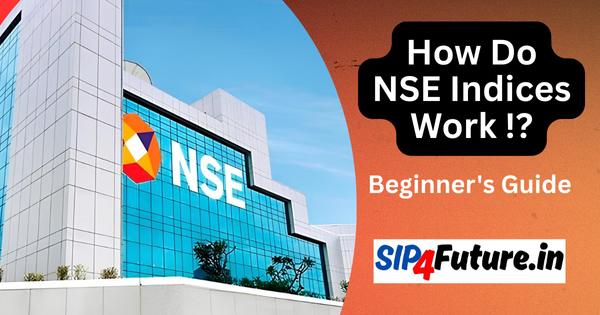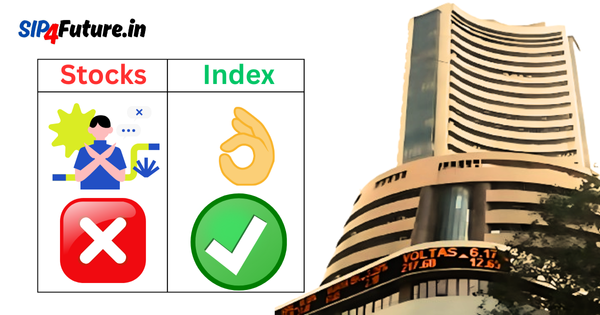Vishal Mega Mart Limited (VMM), a leading name in India’s retail sector, has solidified its position as a powerhouse with its stellar Q4 FY23 results. The company’s stock, trading on the National Stock Exchange (NSE) at ₹107.71 with a modest 0.20% gain as of April 30, 2025, reflects investor confidence in its robust growth. This article dives deep into VMM’s financial achievements, minor regulatory challenges, and the broader market dynamics shaping its trajectory, offering a comprehensive look at why the Vishal Mega Mart stock is a focal point for investors.
What Drives Vishal Mega Mart’s Financial Success?
Vishal Mega Mart’s Q4 FY23 performance underscores its operational excellence and strategic focus on India’s middle and lower-middle-income consumers. The company reported a net profit of ₹1.15 billion, an impressive 88% jump from ₹612 million in the same quarter the previous year. Revenue for the quarter soared to ₹25.48 billion, marking a significant year-over-year increase. For the full fiscal year, VMM’s revenue grew by 20.25% to ₹107,163.45 million, with net profit rising 36.81% to ₹6,319.67 million.
The company’s Same Store Sales Growth (SSSG) of 13.4% highlights its ability to drive consistent sales across existing stores, a key indicator of retail health. This growth is attributed to VMM’s diversified product portfolio, which spans apparel, general merchandise, and fast-moving consumer goods (FMCG). With 645 stores across 414 cities and a robust e-commerce platform, VMM’s hub-and-spoke distribution model ensures efficient operations and wide market reach.
| Financial Metric | Q4 FY23 | Q4 FY22 | YoY Change |
|---|---|---|---|
| Net Profit (₹M) | 1,150 | 612 | +88% |
| Revenue (₹M) | 25,480 | N/A | N/A |
| SSSG (%) | 13.4 | N/A | N/A |
For the full year, VMM’s financials paint a picture of sustained growth:
| Metric | FY23 | FY22 | YoY Change |
|---|---|---|---|
| Revenue (₹M) | 107,163.45 | N/A | +20.25% |
| Net Profit (₹M) | 6,319.67 | N/A | +36.81% |
These figures, reported on April 29, 2025, align with Vishal Mega Mart’s strategic expansion, including the addition of 85 new stores in FY25, as noted on the NSE website.
How Does the Retail Sector Influence VMM’s Stock Performance?
The Indian retail sector, valued at over $1 trillion, is undergoing a transformation driven by rising disposable incomes, urbanization, and a shift toward organized retail. Vishal Mega Mart, with its focus on Tier-II and Tier-III cities, capitalizes on this trend. The company’s private label strategy and bulk purchasing model allow it to offer affordable products, boosting margins while catering to price-sensitive consumers.
The retail sector’s growth is further supported by government initiatives like the Digital India campaign, which enhances e-commerce accessibility. However, intense competition from players like DMart and Reliance Retail poses challenges. VMM’s ability to maintain a low debt-to-equity ratio (0.0 in FY24) and strong cash reserves (₹463 crore in FY25) positions it favorably against competitors, as highlighted in its Moneycontrol profile.
Sector-Specific Drivers
- Urbanization: Over 35% of India’s population now resides in urban areas, driving demand for organized retail.
- E-commerce Growth: VMM’s mobile app and website complement its 645 physical stores, capturing the growing online shopping trend.
- Private Labels: Exclusive brands enhance profitability by offering higher margins than third-party products.
What Regulatory Hurdles Does VMM Face?
Despite its financial triumphs, Vishal Mega Mart encountered a minor regulatory setback in FY25. The company was fined ₹100,000 for a non-compliant food sample, a penalty it plans to recover from the responsible vendor. This issue, while small in the context of VMM’s ₹49,422.35 crore market capitalization, underscores the importance of stringent quality control in the retail sector.
Regulatory compliance is critical in India, where the Food Safety and Standards Authority of India (FSSAI) enforces strict guidelines. VMM’s swift response to the penalty reflects its commitment to maintaining consumer trust. Investors can track such disclosures on the BSE website, where VMM regularly updates its regulatory filings.
Other Regulatory Considerations
- Tax Compliance: VMM received a tax order for excess Input Tax Credit in February 2025, which it is addressing.
- SEBI Oversight: The Securities and Exchange Board of India (SEBI) returned VMM’s IPO documents in FY24, but the company successfully listed in December 2024, raising ₹8,000 crore.
How Do Government Decisions Impact VMM’s Stock?
Government policies play a pivotal role in shaping the retail sector and, by extension, Vishal Mega Mart’s stock performance. The Indian government’s push for Make in India and Atmanirbhar Bharat encourages domestic manufacturing, benefiting VMM’s private label strategy. Additionally, relaxed Foreign Direct Investment (FDI) norms in retail allow VMM to attract global partnerships, enhancing its supply chain.
However, changes in GST rates or import duties can affect VMM’s cost structure. For instance, a potential increase in GST on FMCG products could squeeze margins, though VMM’s bulk purchasing model mitigates some of these risks. The government’s focus on rural development, including schemes like Pradhan Mantri Gram Sadak Yojana, improves connectivity to Tier-III cities, aligning with VMM’s expansion strategy. These policies are detailed on the Government of India’s official portal.
Key Government Initiatives
- Digital India: Enhances VMM’s e-commerce capabilities.
- FDI Reforms: Attracts global investors, boosting VMM’s valuation.
- Rural Infrastructure: Supports store expansion in smaller cities.
What Is the Global Market Scenario’s Effect on VMM?
The global retail market, projected to reach $31 trillion by 2026, is influenced by inflationary pressures, supply chain disruptions, and shifting consumer preferences. In India, VMM benefits from a relatively stable macroeconomic environment, with inflation moderating to 5.5% in 2025, as per RBI reports. However, global challenges like rising raw material costs and geopolitical tensions impact import-dependent retailers.
VMM’s focus on domestic sourcing for its private labels shields it from some global supply chain volatility. The company’s stock, trading at a P/E ratio of 85.32, reflects optimism about its growth potential, though it’s higher than the sector average of 17.11, as noted on Business Today. A strong Indian rupee and favorable trade agreements further support VMM’s cost management.
Global Factors Affecting VMM
- Inflation: Moderating in India but high globally, affecting input costs.
- Supply Chains: Domestic sourcing reduces reliance on volatile global markets.
- Consumer Trends: Growing demand for value-driven retail aligns with VMM’s model.
When Did VMM’s Stock Shine in the Market?
Vishal Mega Mart’s stock made a blockbuster debut on December 18, 2024, listing at ₹110 on the BSE (41% premium over the ₹78 IPO price) and ₹104 on the NSE (33.33% premium). The IPO, subscribed 27.28 times, raised ₹8,000 crore through an offer for sale (OFS), as reported by The Hindu BusinessLine. Since listing, the stock has fluctuated, reaching a 52-week high of ₹126.87 and a low of ₹96.05.
Recent trading data shows VMM’s stock at ₹107.71 on April 30, 2025, with a market cap of ₹49,422.35 crore. Analyst ratings, including a “Buy” recommendation from ICICI Securities with a ₹140 target, suggest a 30% upside, per LiveMint. The stock’s resilience amid market volatility reflects VMM’s strong fundamentals.
| Stock Metric | Value |
|---|---|
| Current Price (₹) | 107.71 |
| Market Cap (₹Cr) | 49,422.35 |
| 52-Week High (₹) | 126.87 |
| 52-Week Low (₹) | 96.05 |
| P/E Ratio | 85.32 |
How Does VMM Compare to Its Peers?
VMM operates in a competitive landscape alongside DMart, V-Mart, and Reliance Retail. While DMart boasts higher profitability, VMM’s faster store expansion (90 stores added in FY25) and focus on smaller cities give it an edge in market penetration. V-Mart and V2 Retail, which also target value retail, have seen stock surges due to strong business updates, positively influencing VMM’s stock sentiment, as noted on Moneycontrol.
Peer Comparison
| Company | Market Cap (₹Cr) | P/E Ratio | Revenue Growth (YoY) |
|---|---|---|---|
| Vishal Mega Mart | 49,422.35 | 85.32 | 20.25% |
| DMart | 300,000+ | 120+ | 15% |
| V-Mart | 7,500 | 60 | 18% |
VMM’s higher P/E ratio reflects its growth-oriented valuation, but its debt-free balance sheet and strong cash flows make it a compelling investment.
What Are the Future Prospects for Vishal Mega Mart Stock?
Analysts are optimistic about Vishal Mega Mart’s stock, citing its scalable business model and strategic focus on Tier-II and Tier-III cities. Below are target prices from leading research firms as of April 2025:
- ICICI Securities: ₹140 (30% upside, “Buy” rating)
- Jefferies: ₹125 (16% upside, “Hold” rating)
- Bernstein: ₹90 (16% downside, “Sell” due to margin concerns)
Historical returns provide context for VMM’s performance:
- 1 Month: +7.06%
- 3 Months: -1.12%
- Since Listing (Dec 2024): ~3%
The company’s plans to tap cities with populations over 50,000 and enhance its e-commerce platform position it for long-term growth. However, investors should monitor same-store sales growth and margin expansion, as advised by Financial Express.
Conclusion: Why Vishal Mega Mart Stock Stands Out
Vishal Mega Mart’s stock is a beacon of growth in India’s retail sector, driven by robust financials, strategic expansion, and a consumer-centric model. Despite minor regulatory hiccups, VMM’s ability to navigate challenges and capitalize on market trends makes it a compelling investment. With a positive outlook from analysts and a strong foothold in Tier-II and Tier-III cities, the Vishal Mega Mart stock is poised for continued success.
Disclaimer: The information provided in this article is for educational purposes only and should not be considered financial advice. Investing in stocks involves risks, and past performance is not indicative of future results. Always conduct thorough research or consult a financial advisor before making investment decisions.




